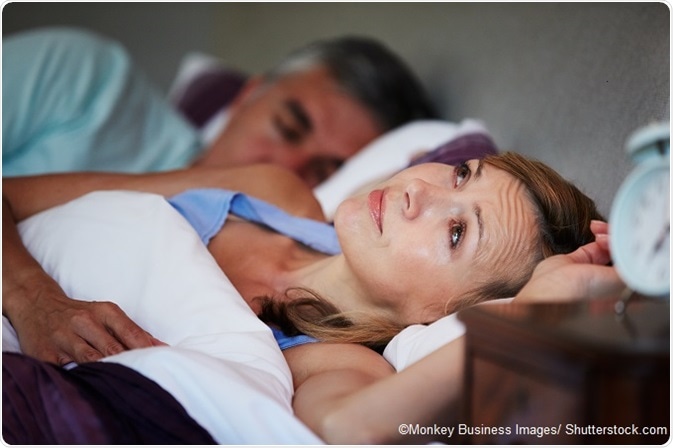Site Under Development, Content Population and SEO, Soft Launch 1st January 2020
Insomnia is a common condition which causes emotional and physical stress, and is also responsible for many workday losses and decreased productivity.
The management of insomnia starts with taking a detailed history to identify the exact nature of the sleep problem. The patient must also be evaluated for any past or present medical condition, for medication use, and for other psychiatric or psychological disorders which might cause or contribute to the insomnia. Each patient must be asked about sleep hygiene, to identify factors which may disrupt normal sleep onset.

Further testing may be done in a sleep lab, including polysomnography and multiple sleep latency testing.
Insomnia management requires personal recommendations to correct underlying etiological or contributory conditions. Proper sleep hygiene must always be taught to the patient and the family or those who share the sleep environment. This includes:
There are many modes of management of sleep-onset insomnia, and treatment should be tailored to specific needs. The effectiveness of each treatment is measured by whether it reduces the time to sleep onset, or increases sleep time by at least 30 minutes.
The non-pharmacologic treatment of sleep-onset insomnia includes a wide range of measures.
This is based on helping the patient to recognize and modify the pressuring and unpleasant thoughts associated with inability to go to sleep at once. This is accompanied by help in changing behavioral responses appropriately. CBT may be given in individual or group sessions, followed by reviews. CBT helps the patient calm down over the whole day rather than just help decrease the time to sleep onset at night. Even if the sleep time remains the same, the patient is satisfied and unworried which has the same or better effect on health. It is highly effective, surpasses the effects of drugs, and is even better alone than when combined with medications. It has the additional advantage of having minimal adverse effects. Self-administered CBT via written or audiovisual presentations is being explored, which will increase the availability of this mode of therapy. The only hindrance might be the need to standardize the distributed materials to conform to the principles of CBT.
The following components are involved:
Sleep restriction, stimulus control, and cognitive recognition, help more patients than other types of CBT techniques, though each may have its own role to play.
Other modes of treatment include psychotherapy, stress relieving techniques, chronotherapy and bright light therapy.
Prescription medications
Medications are used as the first-line approach in many cases because of the limited availability of CBT-trained personnel and the need for personal interactive sessions. The sedation they cause reduces the arousal state, thus improving night sleep. They have adverse effects, however, which limits their long-term use in many cases. Ideally, they should be used to bring about a rapid improvement in sleep over the short term while the patient is learning to use CBT techniques.
Benzodiazepines are hypnotic drugs which have been used traditionally to induce sleep, because they reduce the sleep latency and increase sleep duration. Their long duration of action and significant residual sedation have been cause for concern. They may cause amnesia and respiratory depression in some cases, as well as having addiction potential. They also shorten REM sleep.
Nonbenzodiazepines include the sedative GABA-ergic agents such as zolpidem and the newer zaleplon which has a very short half-life (1.5 to 4 hours), as well as the melatonin receptor agonist trazodone. Zolpidem (especially in sublingual form) and zaleplon are given at bedtime to induce sleep in sleep onset insomnia because of their short duration of action.
Certain antidepressants which reduce the activity of the HPA axis have been used. These offer a better effect without rapid induction of tolerance, and have a better safety profile over the long term.
Over-the counter medications
Patients with sleep-onset insomnia have traditionally taken sedating antihistamines (diphenhydramine and doxylamine) to hasten sleep onset, but they quickly induce tolerance, and often leave the patient sleepy or less alert the next morning as well. This is also a serious potential drawback of the benzodiazepines. The lingering effects of impaired muscular reflexes and coordination, with slowing of memory and a sense of fatigue, have dogged the use of most of these drugs.
Herbal preparations such as melatonin and valerian have been promoted for use in this condition primarily due to this concern. Melatonin is a hormone intimately concerned with the light-dark cycle and circadian rhythms, including sleep cycles. Its amount in the body is reduced due to the use of tobacco, alcohol, and many drugs. Its levels also go down with age. It is used to induce sleep by early evening administration, which advances the Circadian phase.
Valerian root, valeriana officinalis, is used for the central sedative action of its oil, which causes inhibition of GABA metabolism and induces sleep
Alcohol is used as an aid to sleep but in excess it may cause the nocturnal awakenings, besides its propensity to fill the bladder and cause the need to void. Moreover, it is very likely to cause addiction.
Pain relievers, such as anti-inflammatory drugs, may also help to treat chronic pain-related insomnia as well as reduce the hyper-arousal associated with insomnia.